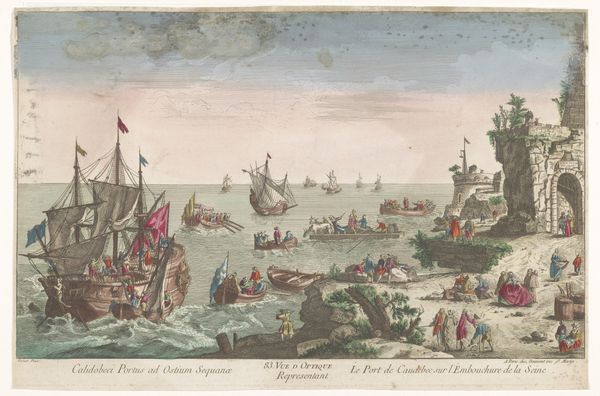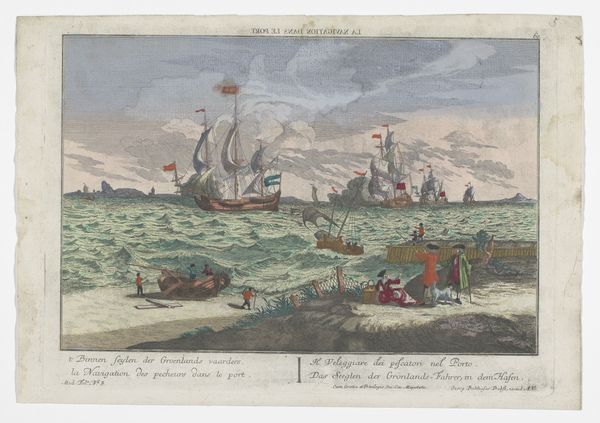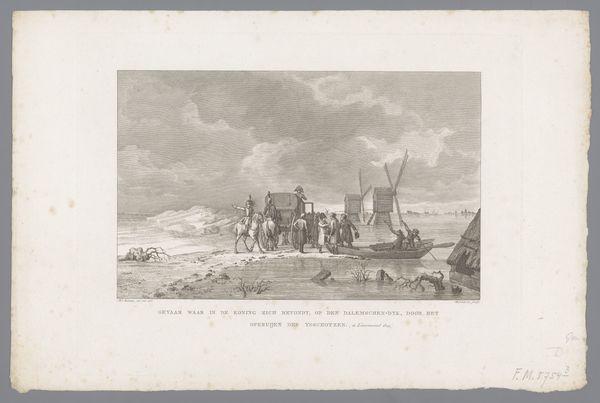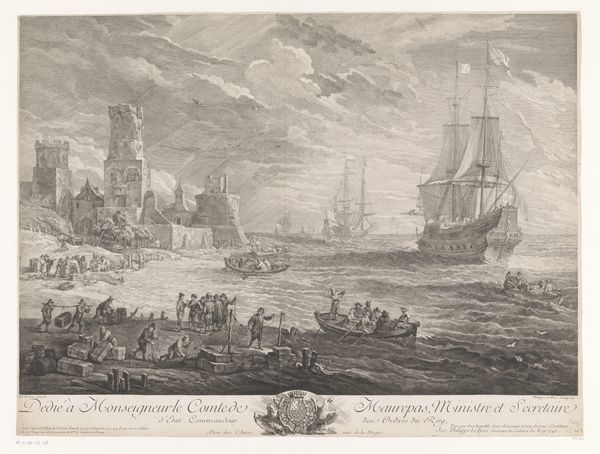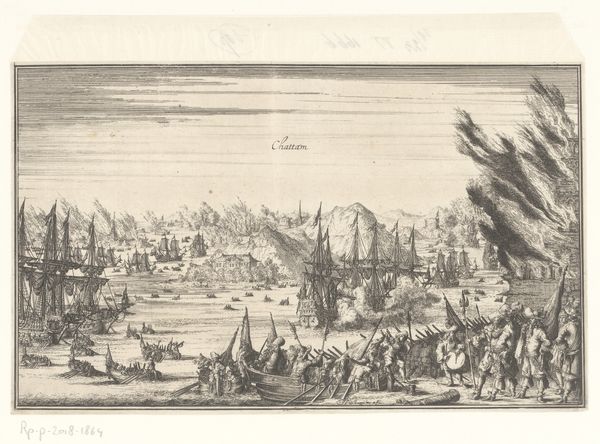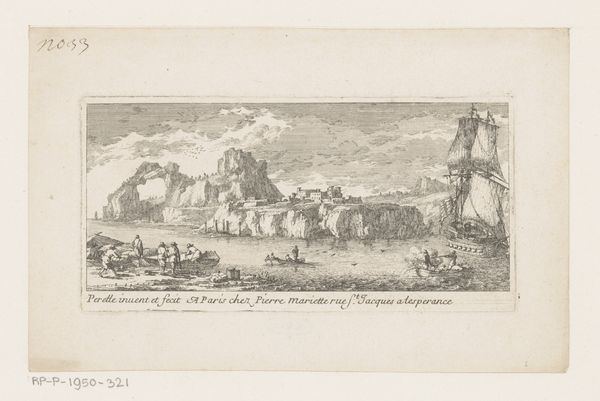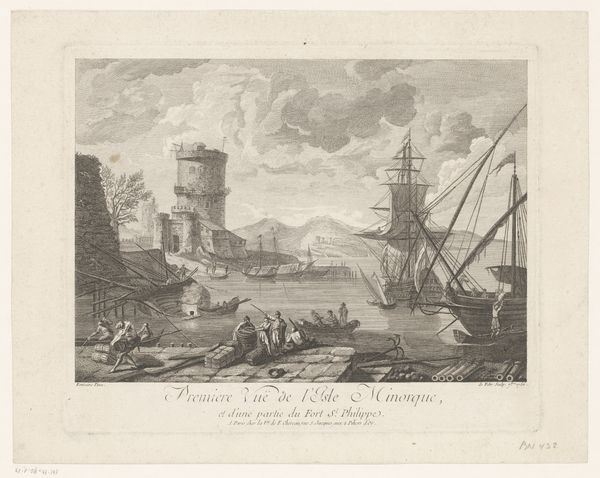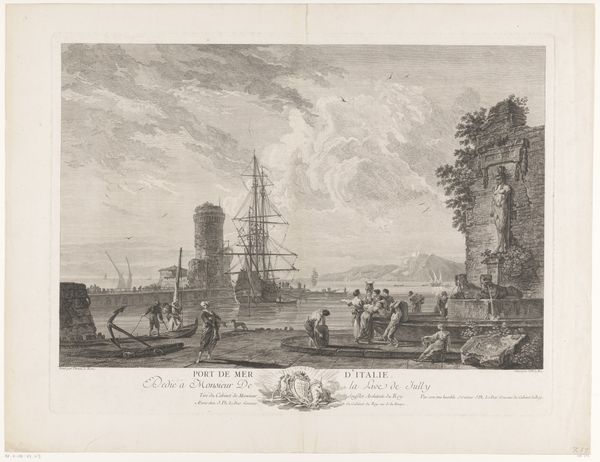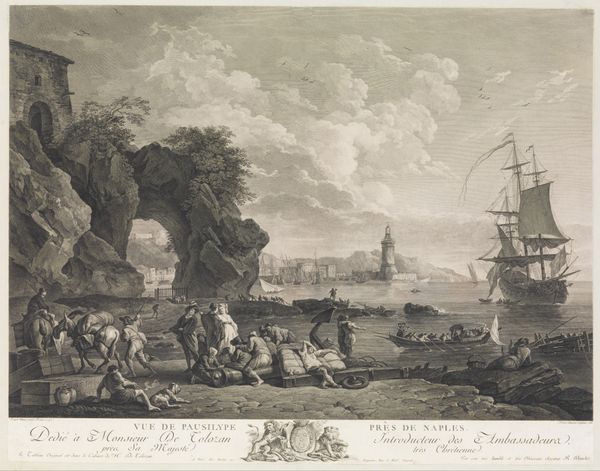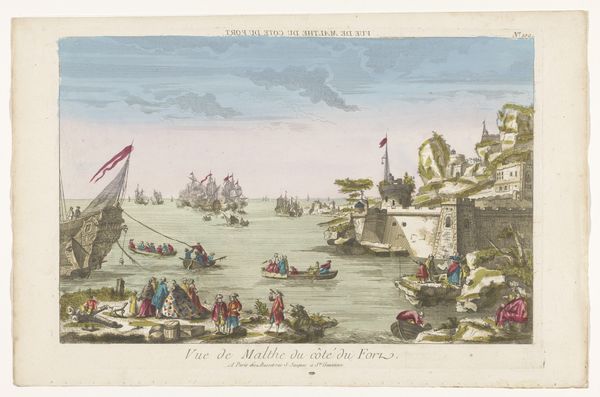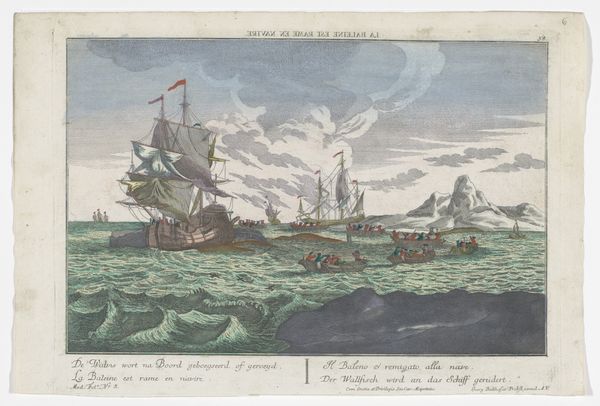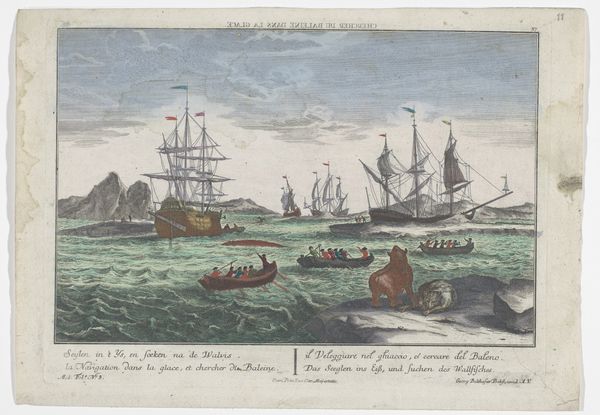
Gezicht op de haven te Caudebec bij de monding van de rivier de Seine 1745 - 1775
0:00
0:00
#
landscape illustration sketch
#
sketch book
#
personal sketchbook
#
sketchbook drawing
#
watercolour bleed
#
watercolour illustration
#
storyboard and sketchbook work
#
cartoon carciture
#
sketchbook art
#
watercolor
Dimensions: height 288 mm, width 438 mm
Copyright: Rijks Museum: Open Domain
Curator: This is an interesting image titled "Gezicht op de haven te Caudebec bij de monding van de rivier de Seine," or "View of the harbor at Caudebec at the mouth of the Seine River," made sometime between 1745 and 1775 by Jean-François Daumont. Editor: My first impression is the sheer vibrancy of this scene. There's a real buzz of activity; figures bustling about, boats arriving and departing. The light also gives it an otherworldly feeling, as if dawn is perpetually breaking on this harbor. Curator: The detail Daumont captures using watercolor is rather impressive. Note how he delineates the ships—the texture of the wood, the rigging. These would have been crucial elements of the maritime economy, the very structures that facilitated trade and labor across waterways. The pigments themselves, of course, would have been commodities procured through this global network. Editor: Exactly, and we should not forget that Daumont depicts figures of leisure on the banks next to the port itself, emphasizing a stratified social order reliant on colonial trade routes. Look how that monumental gateway seems to watch over the circulation of people and goods—a silent enforcer of a power dynamic embedded in this port city. Curator: It is worthwhile to mention the material processes by which this image itself came into being. Someone would have created the paper. Someone else would have been involved with the preparation of the pigments. Daumont, and those in his workshop, made decisions with a material awareness about the kind of image they wished to evoke, from supply chain to the very paper upon which they worked. Editor: Indeed. We cannot divorce this image from the realities of 18th-century Europe. From the perspective of the historian, we might consider the role that gender and class played for the subjects in the port, as evidenced by their mode of dress and occupation in the landscape. We ought to reflect on Daumont's status as observer, an implied outsider capable of depicting, and to an extent, constructing the narrative of the depicted scene. Curator: Understanding Daumont's role within the networks of artistic production brings so much more insight to the experience. Editor: And remembering that history always plays an active part in the present. Even in art.
Comments
No comments
Be the first to comment and join the conversation on the ultimate creative platform.
